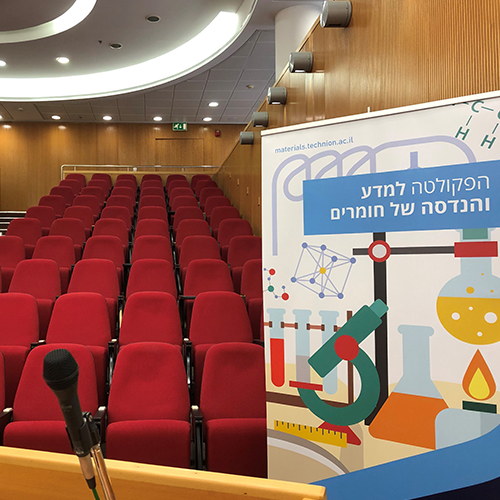
Mr. Yixin Yang - MSc candidate
14/01/2024
ZOOM
14:30 (Jerusalem time) (20:30 Beijing time)
Piezoelectric materials are the core of defense and civil technologies, such as naval sonars, cell-phone communication and accurate actuators and motors. Contemporary piezoelectric applications are based mostly on relaxor derivatives of the seminal piezoelectric PbZrxTi1-xO3 (PZT), with stoichiometries that place them at the morphotropic phase boundary (MPB). As opposed to the dominancy of long-range electromechanical interactions in typical piezoelectrics, relaxors are characterized by dominant short-range interactions. These short-range interactions are believed to be the origin for augmented piezoelectric and dielectric functionality in relaxors, although the exact mechanism has remained elusive. Here, we show that [Pb(Ni1/3Nb2/3)O3]x-PZT1-x relaxors exhibit advantageous dielectric and piezoelectric properties, as expected. TEM and XRD analyses confirmed that the relaxors were near the MPB. A careful examination of the temperature-dependent and frequency-dependent dielectric permittivity revealed a broad shoulder just below the ferroelectric transition temperature. A strong correlation between this dielectric shoulder and the change in piezoelectric resonance was found, implying that the shoulder may play a significant fundamental role in the augmentation of functional properties in relaxor piezoelectrics.


